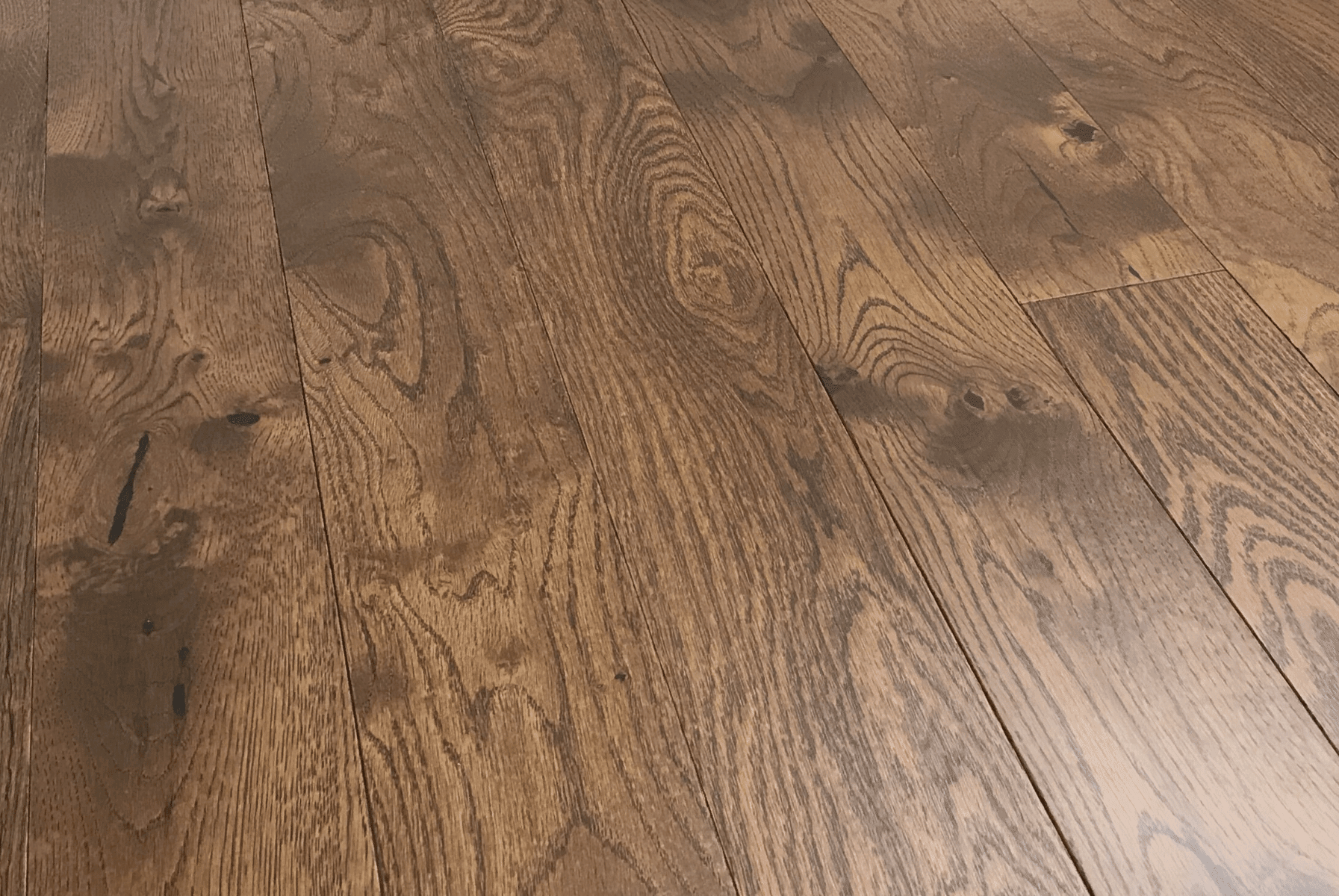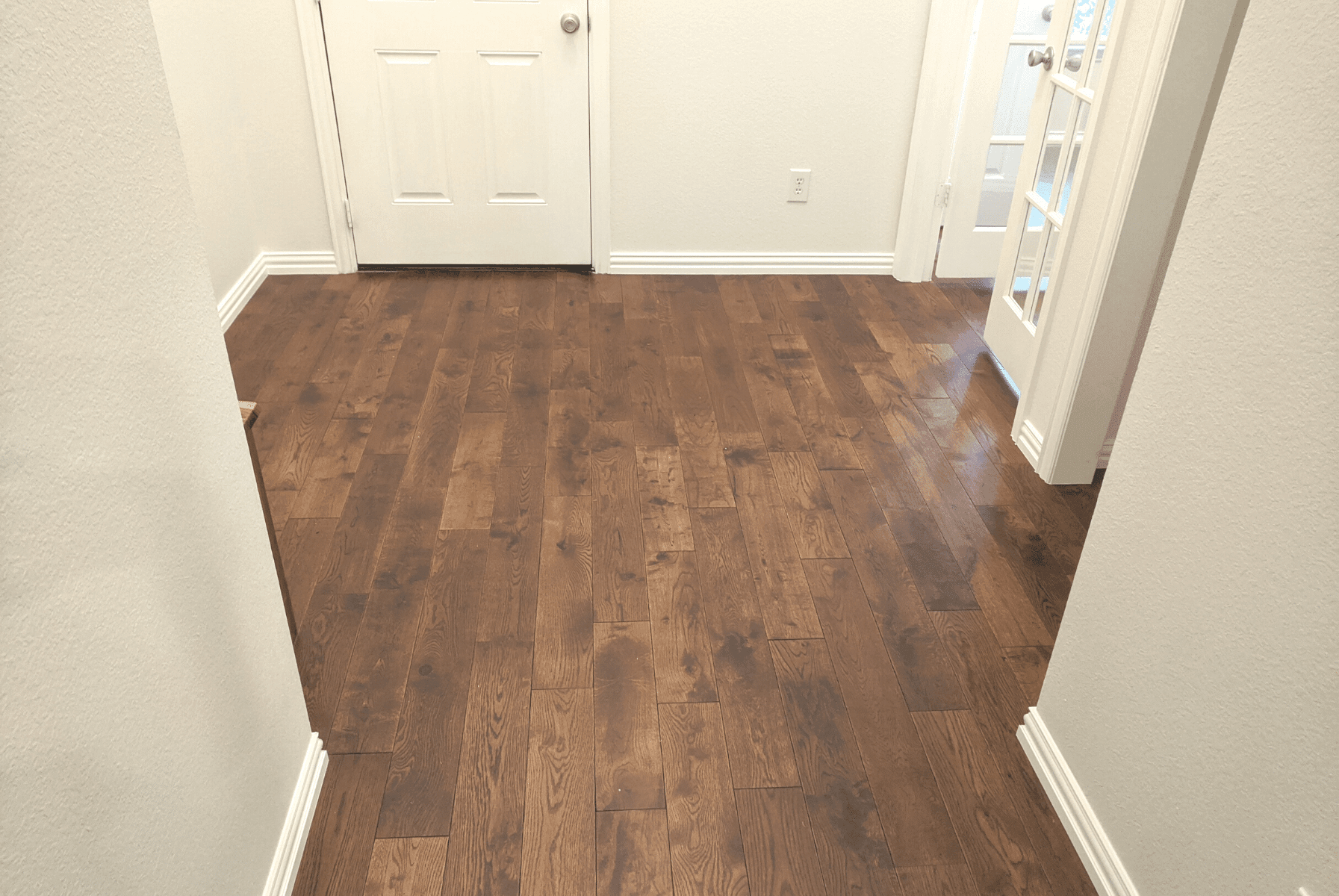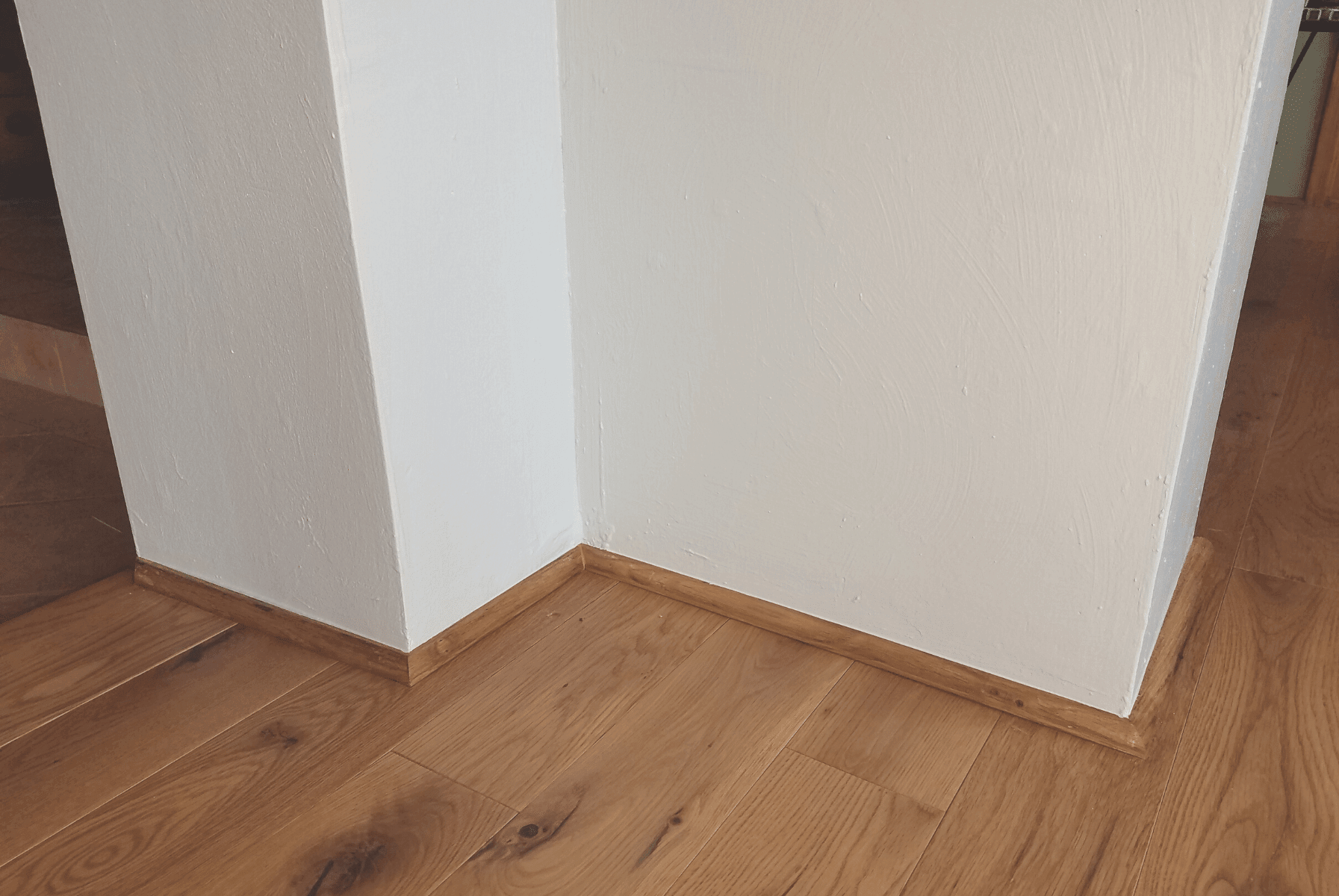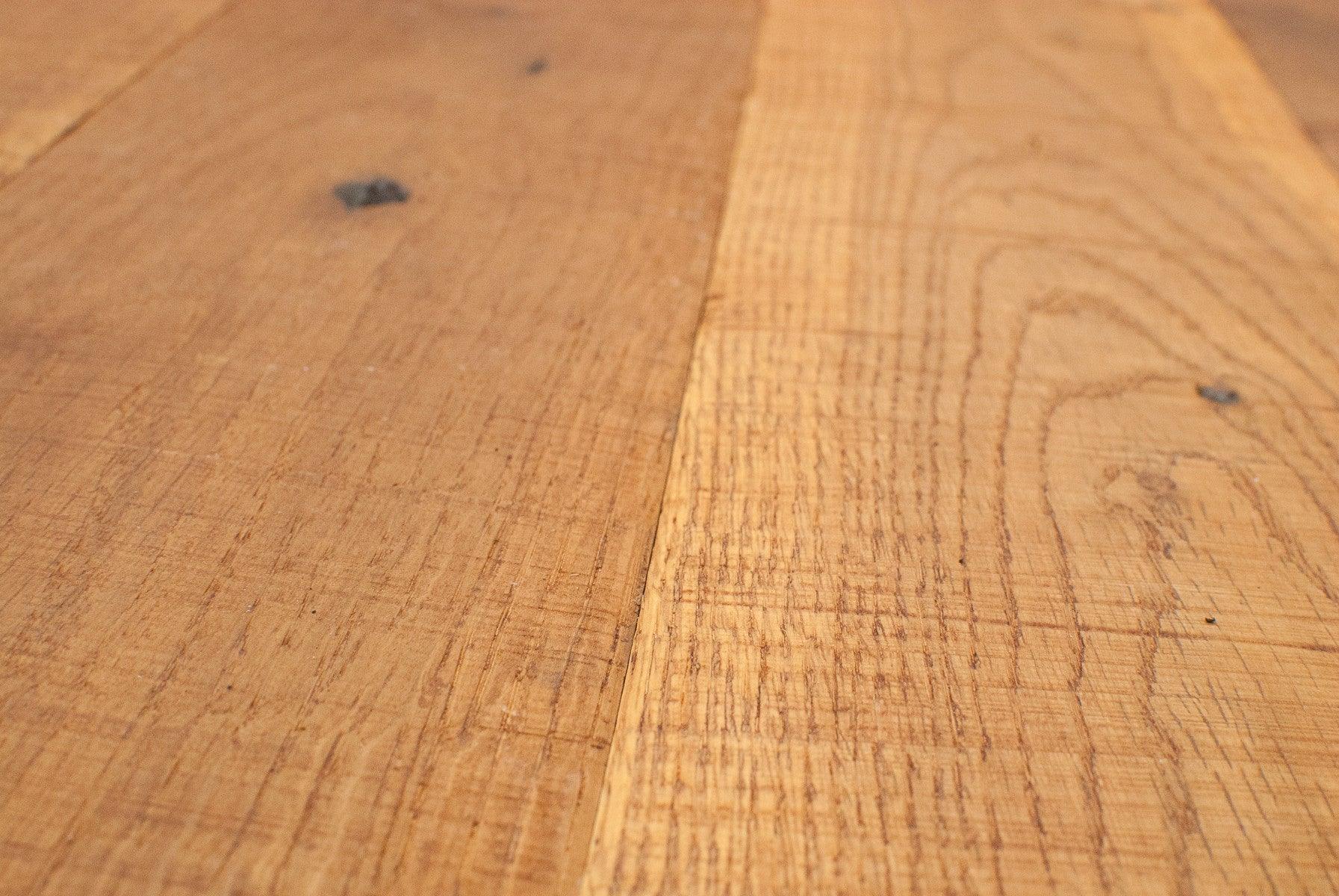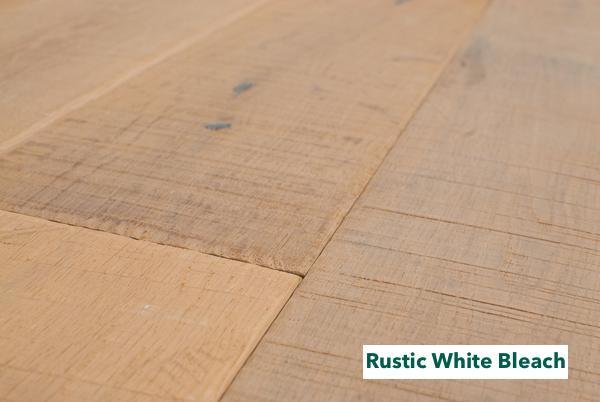Few surfaces rival the natural presence of hardwood. Its warmth, grain, and tactile quality bring sophistication that tile and vinyl cannot replicate. But what happens when that beauty enters one of the most challenging rooms in the house—the bathroom? A space defined by water, steam, and daily wear demands flooring that can perform under pressure. The question is: should you install hardwood floors in bathrooms? With the right strategy and care, it’s possible.
This guide explores the benefits, risks, and protection methods so you can make an informed choice.
The Case for Solid Hardwood Floors in Bathrooms
There are four reasons why some people prefer solid hardwood floors in their bathrooms:
1 - Solid Hardwood Just Feels Better
Wood is a natural insulator. It feels warm underfoot, even on a chilly morning. You can’t say that about tile because it’s always cold and uninviting. Solid Hardwood has a nice way of toning down those echoes that tiled bathrooms create.
2 - Beauty That’s Unique
Hardwood is beautiful. Every solid hardwood floorboard has a unique grain, color, and character. Natural hardwood livens up any space and will create a one-of-a-kind room. It adds a style and ambiance that ceramic tile can’t match.
3 - It’s More Resilient When You Drop Things
Ever drop a glass cosmetic bottle or a cell phone on the tile? They almost always shatter or crack. Solid hardwood is a bit springy, and you have a better chance of keeping things intact if you have an accident.
4 - Solid Hardwood Lasts for Generations
With proper care, solid hardwood floors can last for many decades. The key phrase here is “proper care.” The bathroom environment is naturally higher in humidity than the rest of the home.
Wood and water are not the best of friends, but if you are still thinking about solid hardwood, keep the following in mind.
What to Consider Before Installation Hardwood Floors in Bathrooms
Here are four primary factors before choosing solid hardwood floors.
1 - The Quality of the Finish
The proper finish is your first line of defense against water seeping into the top of the hardwood floor. You’ll want a polyurethane-based sealer to create an invisible barrier on the surface. You may have to reapply it occasionally due to the excess moisture. Be sure to coat the seams as this is the easiest path for water to absorb.
If you plan to finish the hardwood floor yourself, choose a marine-grade or polyurethane rated for outdoor use. It is your best insurance against water.
Keep in mind that the sealer or top finish only protects the surface. Water that penetrates the joints and edges can cause visible damage to the hardwood floor from the sides and below.
2 - The Type of Hardwood
Some wood resists water better than others. Teak and cedar naturally resist water. However, because of their low density, avoid softwoods like pine or fir.
With proper finishing, any hardwood floor such as white oak, cherry, maple, or hickory will offer the look and durability you want. It depends on the floor design you want and your budget.
3 - The Manufacturer’s Warranty
Now that you’ve narrowed your search to one or two choices, be sure to research the manufacturer’s warranty. Some will explicitly void a warranty if installed in a bathroom. Others are more flexible, provided you follow their instructions.
Here is a Pre‐Finished Solid Wood Flooring Product Warranty from Easiklip. They list the six “Warranty Voiders” that wood flooring manufacturers have in their warranties.
- Water soaking into the wood from above or below
- Wet mopping or failure to clean up spills
- Using a steam cleaner on the floor
- Wet subfloor
- Relative humidity at the site below 40% or above 65%
- Failure to protect the floors from damage caused by sand or grit, pets, high heels, chair/furniture without protectors, lack of mats at entryways, excessive foot traffic, household chemicals, abrasive cleaners, excessive sunlight, extreme heat, etc.
If you follow the preventative measures we’ve stated below, you should not have an issue.
What Can Go Wrong—and Why
The biggest challenge with hardwood floors in bathrooms is water exposure—from splashes to humidity and leaks. Wood is a natural product that’s very porous. Even with a top coat of polyurethane, it still absorbs and releases moisture through the edges and bottom.
Unlike tile, wood expands and contracts. Indeed, there are drawbacks to laying down hardwood floors for bathrooms. Let’s take a look at them and then how we can mitigate these potential issues.
Excess Water from Spills, Splashes, and Flooding
There will always be water splashes from the sink, tub, or shower. If you have kids, water on the floor is inevitable. Even the most careful adult can easily splash drops of water while rinsing their face or hands.
High Humidity
Does someone in your house like to take steaming hot showers? Bathrooms typically have the highest humidity in the home, due to a combination of hot showers and poor ventilation. Constant high humidity can be detrimental to solid wood floors.
Uneven Subfloor
If the subfloor is uneven, it could create low spots on the solid hardwood floor above, which can create small puddles. Prep the subfloor, so it’s level and smooth.
Lack of Moisture Barrier
Typically, hardwood floors install using glue screws or nails. That won’t work for a bathroom floor. You want to put down a moisture barrier to prevent water from seeping into the subfloor. Nails and screws will puncture the barrier. The solution is to use a clip together hardwood floor system that won’t pierce the moisture barrier.
Chemical Staining
Most bathroom cleaning products contain bleach, lye, or other harsh chemicals. These can cause permanent stains in hardwood flooring.
Mold and Mildew
Anytime a surface stays wet for extended periods, mold and mildew will grow. Wet wood can harbor mold and mildew in the seams, underneath and along the edges. Humidity levels above 65% support mold and mildew growth.
You can work around all the problems mentioned above. Here are solutions to overcome these issues.
How to Protect Hardwood Floors In Your Bathroom
The number one enemy of hardwood floors is water. The best way to prevent excess water on your hardwood floor is to use bathmats to intercept any water splashing from the sink, tub, or shower. Clean up any remaining drops of water with the mat or other absorbent material. Don’t leave damp bathmats on the hardwood floor. Always hang them up to dry before using them again.
While the finish protects the top of the hardwood flooring, you still need to wipe up any water immediately so that it doesn’t seep down between seams.
Some other preventative measures include:
-
- Regular Floor Maintenance – Clean and wax the hardwood floor regularly. You can see if the top finish layer is still suitable if a small drop of water beads up. If it lays flat or soaks in, you need to reseal or wax immediately. Take care to seal the joints and cracks between the boards.
- Maintain Plumbing Fixtures – Plumbing joints and toilets are notorious for causing slow leaks and drips. Always keep an eye out for the first drops of water and fix them immediately.
Install Tub and Shower Surrounds – These devices help deflect water back into the shower and not on the floor. Seal any joints around shower doors to prevent water leaking onto the hardwood flooring.
Proper Ventilation – Poor ventilation causes most moisture issues in bathrooms. If you can’t open a window, consider installing a vent fan to remove excess humidity. If you already have a window and vent fan, use them often.
Prevention is always less expensive than a cure. However, if the floor finish gets damaged, you can always refinish it to make it look like new.
A Bold Choice, Made Smarter
Hardwood in a bathroom is both daring and rewarding. It brings an unmatched sense of warmth and luxury but demands a higher level of care than conventional tile or vinyl. For those willing to commit to the maintenance, the payoff is a space that feels serene, tactile, and distinct. And with modern clip-together hardwood systems, the choice is no longer impractical—it’s a thoughtful statement of design.
Bring Natural Elegance Home
Transform your bathroom with Easiklip’s solid oak floating floors—prefinished, durable, and designed for easy DIY installation. Keep the beauty of real hardwood while preserving a secure moisture barrier.
Order your free sample today: https://easiklip.ca/pages/order-samples
Explore pricing here: https://easiklip.ca/pages/pricing
Experience a bathroom floor that balances natural luxury with everyday practicality.




